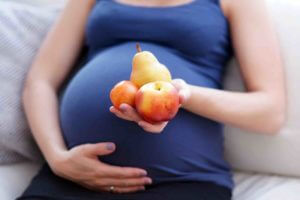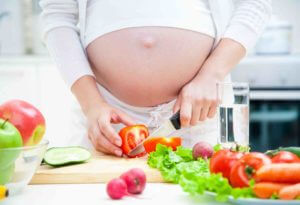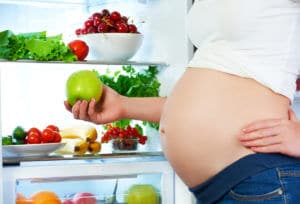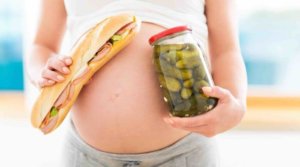No salami during pregnancy – this is often heard and often read. What is really true about this ban and that the optimal diet does not have to go hand in hand with a complete renunciation of salami during pregnancy, you will learn in this article.
Table of contents
The Production Of Salami: Here Is The Seed Of Danger
There are good reasons why the consumption of salami in pregnancy is not recommended. In order to comprehend and understand them, it is first necessary to take a look at the production of salami.
Salami is categorized as a raw sausage because it is not heated during production. A salami is made from a piece of raw pork, usually bacon and/or pork belly in addition to a good portion of muscle meat.
In original recipes of foreign specialty producers, beef or meat from donkeys and mules may also be used.
However, this is rare today and must also be labeled if the salami is imported and sold in Germany. If a special type of salami is made from turkey meat or game meat, this turkey salami or game salami must also be identified as such in the sales description.
The meat is strongly cooled or frozen and then turned into a more or less fine mass. This mass is then seasoned with salt and pepper and other spices depending on the recipe used.
The sausage mass is now almost always “inoculated” with a starter culture of certain strains of bacteria, as the freshly minced meat does not contain enough ripening bacteria.
This mass is then traditionally filled into natural casings, but today various other types of sausage casings can also be used.
The production is completed with the maturation, which can last from 2 days to 6 months, followed by air-drying if necessary. Often the salami shows a typical noble mold coating on the outer wall, which is either formed during the natural ripening process.
Or is bonded to the sausage casing by the application of external noble mold cultures.
What Is So Dangerous About Salami During Pregnancy?
So salami is made from raw meat, the only preservation (preservation) of which is that the salami is slowly air dried or perhaps smoked a bit beforehand.
If it is a type of salami that has been smoked, this was not done in hot smoke that kills bacteria. Because this would then also kill the “good bacteria” that were added with the ripening culture and possibly noble mold culture.
That is why salamis are traditionally cold smoked for up to about 24 hours, at temperatures below 20 °C.
That is why a salami can only be stored (= kept) for about half a year.
After this relatively short time, it no longer tastes as it should because the preservative nitrite curing salt (which we will discuss in more detail below) eventually crystallizes and loses its effectiveness.
This helps the added “good” bacteria strains to grow in a way that alters the taste and is unhealthy in the long run.
In this whole production process, however, quite different bacteria can also get into the salami, which can cause real trouble long before the best-before date expires.
These are initially listeria, bacteria that occur everywhere in nature and soil. However, when they multiply excessively, they cause nausea and diarrhea symptoms are commonly known as “food poisoning”.
In addition, the raw meat that still makes up the salami when it is ready to eat may contain toxoplasmosis pathogens.
Both germs should be avoided as far as possible during pregnancy.
Listeriosis And Toxoplasmosis: A Serious Risk When Eating During Pregnancy
Listeriosis And Salami In Pregnancy
As mentioned, listeria are ubiquitously distributed bacteria that feed on dead organic material in the soil, for example. From there, they get onto plants, food, and into the intestinal tract of animals and eventually humans.
The infection caused by listeria bears the technical term listeriosis and is annoying for most people, but harmless. Normal people dispose of the germs through diarrhea and vomiting, which usually pass quickly.
In pregnant women it is different and much worse, especially for the child: if an expectant mother ingests listeria germs via salami during pregnancy, they penetrate to the baby and can have fatal consequences for the unborn child.
It is possible that the infection will lead to premature birth, it can also cause serious damage or even death of the fetus.
Toxoplasmosis And Salami In Pregnancy
The toxoplasmosis pathogens are called “Toxoplasma gondii”. They are tiny parasites that are spread all over the world and actually live on the main host, the cat.
With this main host the parasite lives quite peacefully together, at the first infestation the cats may get a little diarrhea (which then helps the parasite to spread by excreting eggs).
Most of the time, however, the cats don’t even notice and simply develop a lifelong immunity to the pathogen.
However, the toxoplasmosis pathogens use other mammals as intermediate hosts. Among them are the pigs whose fate ends in a salami, but also humans. Humans can even become infected twice.
When cuddling and kissing with a cat kept as a pet and when eating, for example, a salami, in which only a few toxoplasmosis pathogens must have survived.
Normally, the toxoplasmosis pathogen does little to the infected person. In most cases, the intermediate host, which is only intended as a stepping stone anyway, does not notice any symptoms at all, at most flu-like symptoms for a while.
50 to 40 % of Germans and a similar number of people all over the world carry the pathogen or antibodies against it, mostly without ever noticing anything (whereby the infection occurs in roughly equal parts via cats and via food).
But again, this is quite different in pregnancy.
Normally, an infected person does not transmit the pathogens further – however, if infected salami is eaten during pregnancy, pregnant women can transmit the pathogens to the unborn child via the placenta.
If infected salami is consumed during pregnancy, the unborn child could of course not yet develop any defenses against this pathogen. Therefore, a first-time illness of the mother can lead to considerable damage to the unborn child.
Depending on the stage of pregnancy at the onset of the disease, miscarriage is again possible. Or significant impairment of the baby, ranging from epileptic seizures and cognitive impairment to damage to the brain and eyes, liver, lungs and heart muscle.
Why Many Raw Foods Are A Risk When Eating During Pregnancy
Listeria is everywhere, but it multiplies particularly easily on certain foods. These include all raw meat products, which is why it is better to avoid raw minced meat and other products made from raw meat when eating during pregnancy.
The next favorite food of bacteria is raw milk cheese, the fresher and moister the better.
Therefore, eating fresh buffalo mozzarella during pregnancy is not a good idea at all, and you should also refrain from eating nicely moist semi-solid cheeses with blue molds, such as Gorgonzola, or moist cheeses with sticky yellow to red rinds (Esrom, Korbkäse, Limburger) and Harzer cheese, just to be on the safe side.
A further danger of listeria is posed if one of the many intermediate stages of industrial food production has not been carried out cleanly. Since these are notifiable diseases, however, a recall is required by law in these cases, which is broadcast on the television news, for example.
Pay attention absolutely to such recall action, the danger with such contamination in the enterprise is that the germs can spread to all food. The last major recall due to listeria was at the beginning of November 2019 and affected, for example, the meatball balls of Wilke Waldecker Fleisch- und Wurstwaren.
If something like this occurs, eating liver sausage in pregnancy also poses a risk, or other small-part sausages on which germs can multiply well and quickly.
Diet In Pregnancy: Risk Reduction
We talk about bans all the time, the pregnant woman hears them in relation to nutrition in pregnancy for salami and quite a few other foods. She hears so many prohibitions that many pregnant women develop a determined resistance to this coercion.
Therefore, once again to clarify: salami is not forbidden even in the diet in pregnancy, of course, we live in a free country.
It is only a question of “normal” germs, which are rarely present in food and even if do not cause much harm to most people apart from diarrhea and vomiting, suddenly taking on a special role in pregnancy nutrition.
It is like the lottery, except that in the very unlikely case of a bull’s eye, you will not get 6 correct numbers and a lot of money, but damage to your baby.
You don’t have to do that to yourself, although buffalo mozzarella is probably more dangerous than salami during pregnancy:
Salami In The Diet During Pregnancy: Why Complete Renunciation Is Not Necessary
The Federal Food Research Institute assumes that everything is produced as hygienically as it is prescribed – it has to do that, after all, it cannot accuse any companies of unclean work.
For this reason, it is also of the opinion that salami from industrial production can also be enjoyed during pregnancy without hesitation if it is very dry and has been matured for a long time.
Then pathogens such as toxoplasma or listeria cannot survive because of the low water content.
If you prefer not to rely on this, especially in light of the Wildecker recall, you don’t have to live without salami.
For the many pregnant women who have an increased appetite for salami, especially during pregnancy, there are forms of consumption in which the salami cannot harm the baby.
You just need to cook the salami before eating it in a stew, fry it in a pan or bake it on a pizza. As long as the food was also hot inside at least two, three minutes above 70 degrees.
Then you have both pathogens with certainty in the other world promoted. Salami should always be enjoyed in moderation during pregnancy:
Nutrition During Pregnancy
Even if salami were not a problem during pregnancy, it would only be recommended with restrictions when eating during pregnancy because salami has a very high fat content and also contains nitrite.
However, nitrite levels in the diet should always be kept as low as possible because nitrites are potentially toxic compounds.
Nitrites can form so-called nitrosamines with other substances in the body, which can have a mutagenic effect and probably promote the development of cancer.
Salami, raw ham, and pork loin contain only small traces of nitrite, but because you already take in enough nitrate through various vegetables, which in turn can be converted to nitrite in the body, it is recommended that you eat meat and sausage products with nitrite only rarely.
This is generally true for a healthy diet, and you should certainly not make an exception to this rule when eating during pregnancy.
What Else Is Important?
First of all, everything described so far is about germs that normally rarely lead to ailments – but in pregnancy can have dire consequences if, for example, infected salami is consumed during pregnancy.
Experience has shown that these germs can multiply particularly well in certain foods, e.g. in raw meat, raw milk and products made from raw milk.
This is why, for example, buffalo mozarella is not a good idea during pregnancy because, unlike cow mozarella, it is made from milk that has been heated to no more than 39 degrees.
Normal, regular cow mozzarella is not a problem in pregnancy, to begin with, because it has been heated to 80 degrees during production. However, like other everyday foods that are actually harmless when heated, mozzarella can also become a problem during pregnancy if too much is purchased and hygiene is not right.
Even liver sausage can become a risk during pregnancy, even though it is a cooked sausage.












